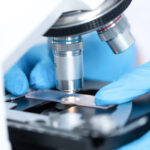On Which Day Should Embryo Transfer Be Performed?

What is embryo transfer?
Embryo transfer is the most important stage in IVF treatment. Embryo transfer is the process of placing the developed embryos into the uterus. Performing the transfer well and correctly is a subject that requires expertise and experience. The most difficult assisted reproductive technique to teach is embryo transfer.
Another factor that affects the success of the treatment is knowing the healthiest embryo that will attach to the uterus before transfer. During the treatment, the low quality embryos that continue to develop in the laboratory for 5-6 days after fertilization are eliminated and cannot develop. Therefore, the percentage of quality embryos that survive up to 5-6 days after fertilization is higher than those that survive for 2-3 days. Therefore, the embryos that reach these days are more likely to attach to the uterus. This process will be determined by the doctor during the in vitro fertilization treatment.
What are the stages that embryos go through after fertilization in IVF treatment?
After fertilization, the embryo enters the blastocyst stage 5-6 days later. The newly fertilized egg is called a zygote before it divides. After the first 24 hours, the zygote divides into two cells and becomes an embryo. On the second day, the embryo becomes 4 cells. On the third day, the embryo should be 6-9 cells. Up to this stage, the development of the embryo is controlled by genes coming from the egg, that is, from the mother. When the embryo reaches the 8-cell stage, it controls its own development with its own genes.
By the fourth day, the embryo has 16-32 cells. It now resembles a mulberry fruit. At this stage, it is called morula. Up until this stage, all cells of the embryo are the same and have the potential to develop into all organs and tissues. The embryo begins to differentiate on the fifth day. A fluid-filled cavity forms in the middle of the blastomere cluster. This later forms the amniotic sac and fluid. The cells around the morula group together to later develop into the inner cell mass that will form the fetus itself. This structure is called a blastocyst. The blastocyst expands as the blastocele fills with fluid. Its walls begin to thin and it tears itself open and comes out. After this, the implantation phase occurs, which is when it attaches to the walls of the uterus.
When should embryo transfer be done?
In order for the embryos to survive, they need very specific metabolic requirements. In the early years of IVF treatment, embryos could only survive for a maximum of 3 days in a laboratory environment. Therefore, embryo transfers were performed on the third day for a long time. Later, thanks to the newly developed artificial culture, embryos began to survive for up to 5-6 days in a laboratory environment. This new culture meets the needs of embryos. Even in young women who can produce good quality eggs, one third of the embryos can reach the blastocyst stage. Good quality blastocyst transfer ensures the success of IVF treatment. In other words, when embryos that are kept for 5-6 days after fertilization are transferred, the poor quality ones are eliminated. This is also a factor that affects success. However, only one third of the embryos can reach this stage. In unsuccessful IVF trials, it would be better if the embryo transfer was performed on the third day.





